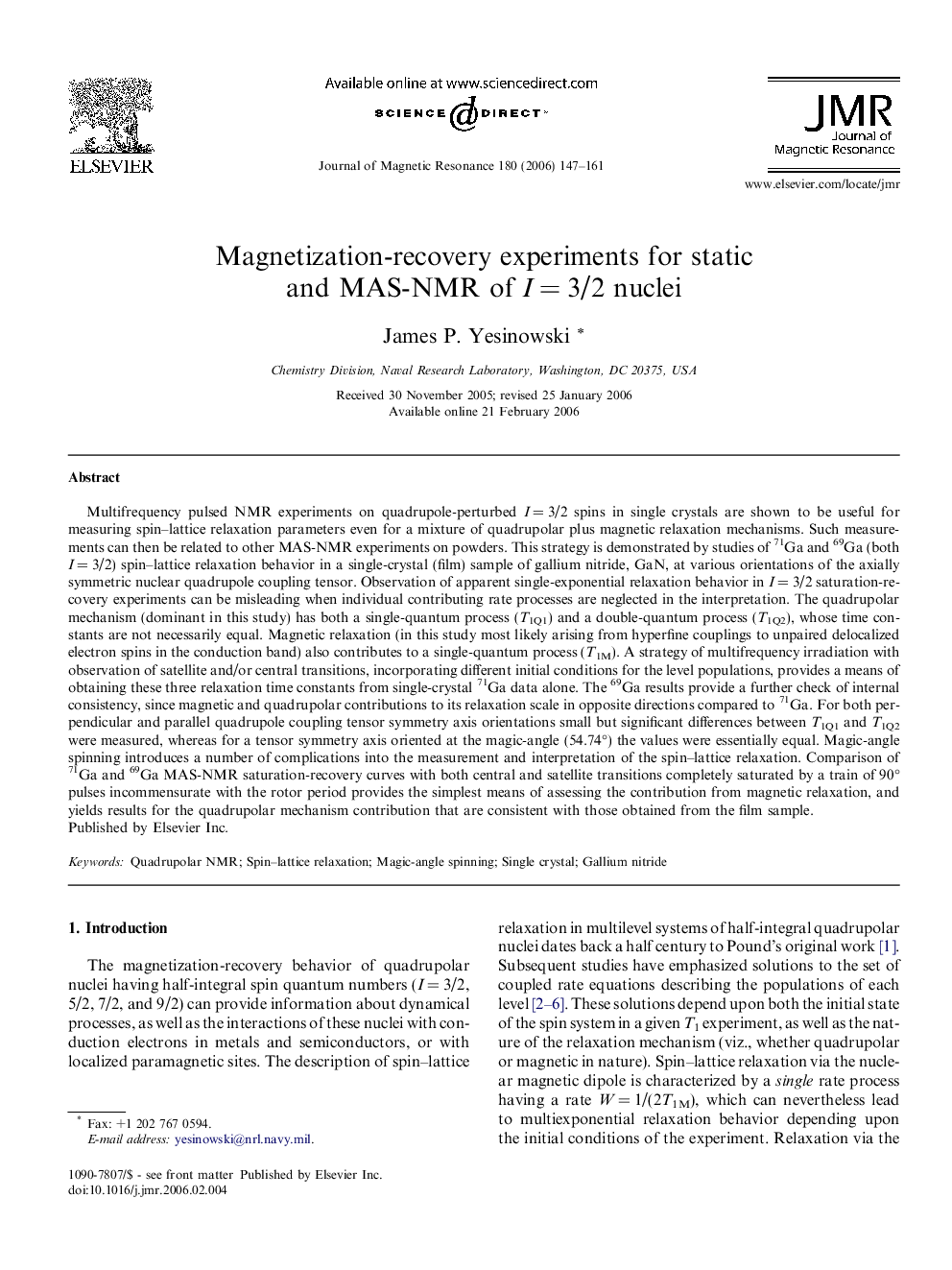| کد مقاله | کد نشریه | سال انتشار | مقاله انگلیسی | نسخه تمام متن |
|---|---|---|---|---|
| 5407834 | 1393233 | 2006 | 15 صفحه PDF | دانلود رایگان |

Multifrequency pulsed NMR experiments on quadrupole-perturbed I = 3/2 spins in single crystals are shown to be useful for measuring spin-lattice relaxation parameters even for a mixture of quadrupolar plus magnetic relaxation mechanisms. Such measurements can then be related to other MAS-NMR experiments on powders. This strategy is demonstrated by studies of 71Ga and 69Ga (both I = 3/2) spin-lattice relaxation behavior in a single-crystal (film) sample of gallium nitride, GaN, at various orientations of the axially symmetric nuclear quadrupole coupling tensor. Observation of apparent single-exponential relaxation behavior in I = 3/2 saturation-recovery experiments can be misleading when individual contributing rate processes are neglected in the interpretation. The quadrupolar mechanism (dominant in this study) has both a single-quantum process (T1Q1) and a double-quantum process (T1Q2), whose time constants are not necessarily equal. Magnetic relaxation (in this study most likely arising from hyperfine couplings to unpaired delocalized electron spins in the conduction band) also contributes to a single-quantum process (T1M). A strategy of multifrequency irradiation with observation of satellite and/or central transitions, incorporating different initial conditions for the level populations, provides a means of obtaining these three relaxation time constants from single-crystal 71Ga data alone. The 69Ga results provide a further check of internal consistency, since magnetic and quadrupolar contributions to its relaxation scale in opposite directions compared to 71Ga. For both perpendicular and parallel quadrupole coupling tensor symmetry axis orientations small but significant differences between T1Q1 and T1Q2 were measured, whereas for a tensor symmetry axis oriented at the magic-angle (54.74°) the values were essentially equal. Magic-angle spinning introduces a number of complications into the measurement and interpretation of the spin-lattice relaxation. Comparison of 71Ga and 69Ga MAS-NMR saturation-recovery curves with both central and satellite transitions completely saturated by a train of 90° pulses incommensurate with the rotor period provides the simplest means of assessing the contribution from magnetic relaxation, and yields results for the quadrupolar mechanism contribution that are consistent with those obtained from the film sample.
Journal: Journal of Magnetic Resonance - Volume 180, Issue 1, May 2006, Pages 147-161